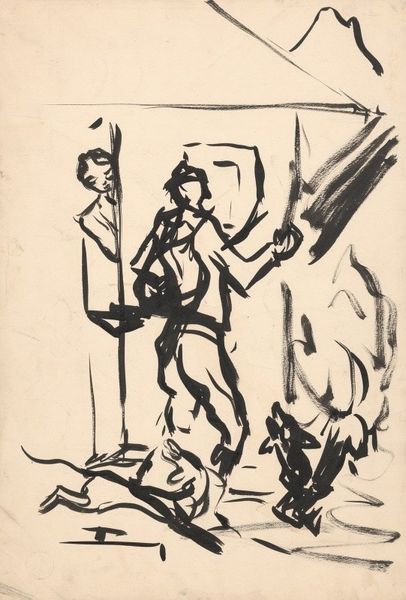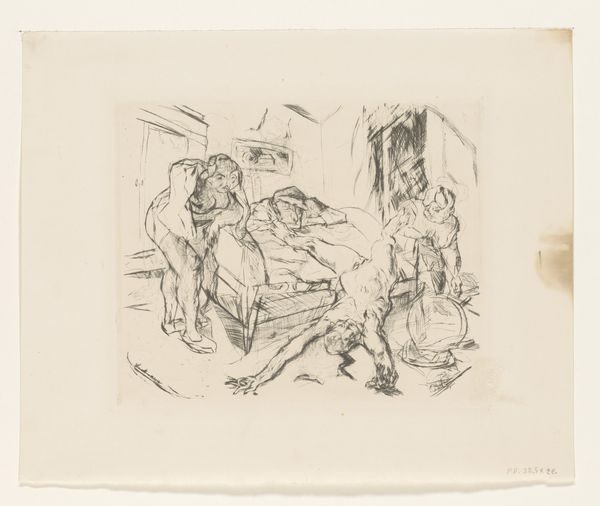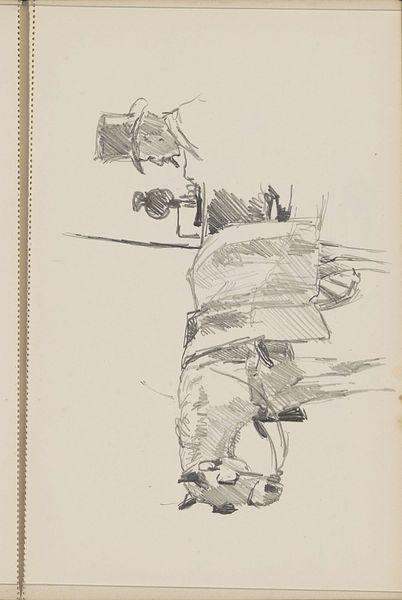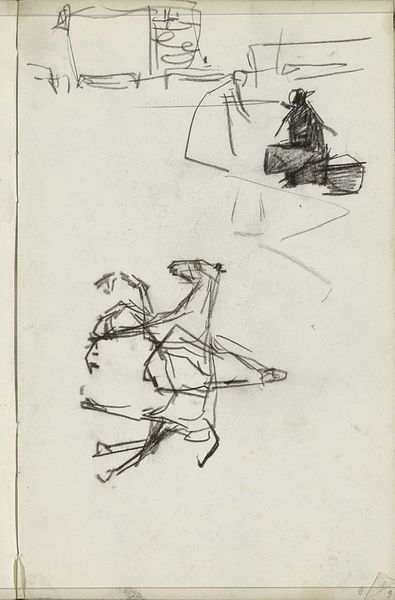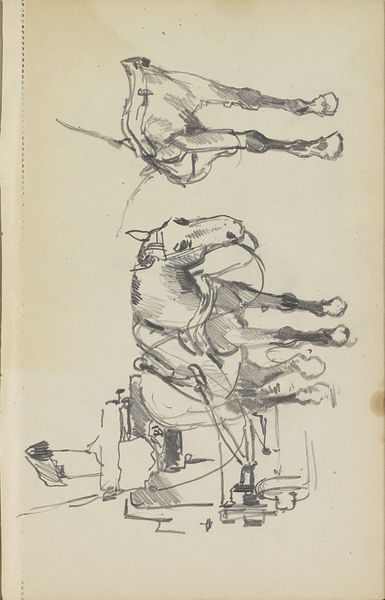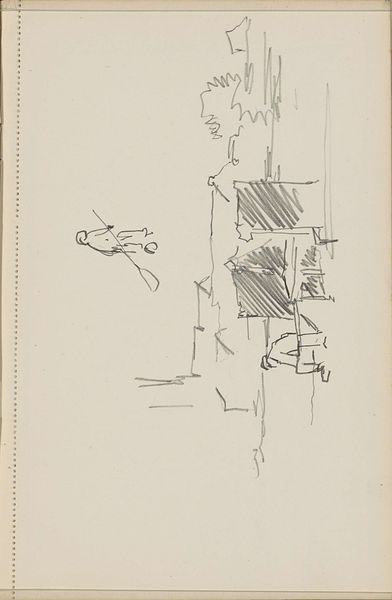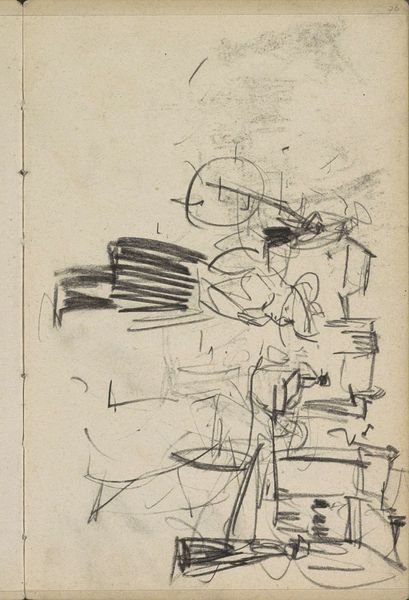
Dimensions: image: 220 x 162 mm
Copyright: © The estate of James Boswell | CC-BY-NC-ND 4.0 DEED, Photo: Tate
Editor: This is James Boswell's lithograph, "Gosfield Street Murder," created in 1934. It depicts a crime scene with stark immediacy. What symbols do you see at play here, beyond the obvious? Curator: The fallen chair and the figure slumped on the floor are obvious symbols of violence, yes, but consider the man seated on the bed. His oversized coat and the gloves he still wears suggest a disconnect, a refusal to fully inhabit the space. Doesn't he remind you of a modern-day Cain, marked by his deed? Editor: That's a fascinating connection! I hadn't considered the psychological weight of his attire. Curator: It's in these details that Boswell transcends mere reportage, tapping into a deeper cultural memory of guilt and isolation. The very sparseness amplifies that feeling. Editor: I see that now – the simplicity actually amplifies the emotional impact. Thanks for pointing that out!
Comments
tate 7 months ago
⋮
http://www.tate.org.uk/art/artworks/boswell-gosfield-street-murder-p11662
Join the conversation
Join millions of artists and users on Artera today and experience the ultimate creative platform.
tate 7 months ago
⋮
This horrific, if conventional, image portrays a murder in a bedroom in Gosfield Street, a road near Oxford Street in the centre of London. The victim is dramatically splayed out in the foreground, her legs apart and her dress above her knees to reveal her stockings and suspenders. Blood spills out from her cut throat on to the floor, while a mans sits on a chair beside the dead body, his eyes wide open and his hands and clothes bloodied from the attack. The upturned chair perhaps suggests a struggle between the couple before the event took place. Boswell heightens the tension of the scene by presenting only the stark details of the crime, the rest of the narrative being left to the viewer’s imagination. The combination of sexuality and violence, executed in a brutally realistic style, recalls the work of the German illustrator, George Grosz (1893-1959), who produced illustrations of modern assassinations, executions and murders to reveal his contempt for German society during the reign of William II, who was Emperor between 1888 and 1918.
